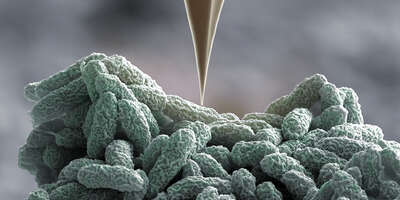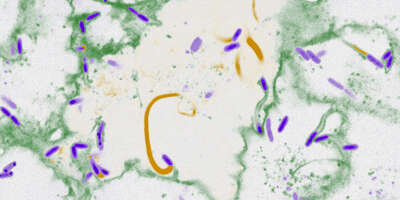Main Content
How do bacterial injection needles function at nanoscale?
Using nano-needles many bacteria inject a cocktail of toxins into other cells. We study the structure, dynamics and function of this bacterial injection apparatus, the so-called type VI secretion system.
During evolution, bacteria have developed a variety of infection tools to infuse proteins and toxins into host cells. One of the methods is the type VI secretion system (T6SS). It is a widespread export system that can be found in soil and marine bacteria as well as in pathogens, such as the bacterium which causes pneumonia, Pseudomonas aeruginosa.
T6SS vital for bacterial virulence
The T6SS plays significant roles in defense, symbiosis as well as interactions between bacteria. Furthermore, it determines the virulence of a pathogen, i.e. the ability of bacteria to cause infectious diseases. We are interested in the key mechanisms underlying the assembly, function and recycling of T6SS.
Function and structure of T6SS
We study the structure, assembly and dismantling of this extraordinarily large nanomachine employing the newest microscopy techniques combined with biochemical approaches and computer analyses. In addition, we aim to uncover how individual components of T6SS interact with each other, which signaling pathways regulate T6SS dynamics and how the injection mechanism functions in detail. In order to do this, we make the mechanism visible using fluorescent labeled molecules.
T6SS as a target in treatment
Our research aims to provide a detailed insight into the function of this complex nano-machine and to contribute to a deeper understanding of bacterial infections in humans. The elucidation of individual pathogen specific T6SS components could provide new approaches for antibacterial therapies.





